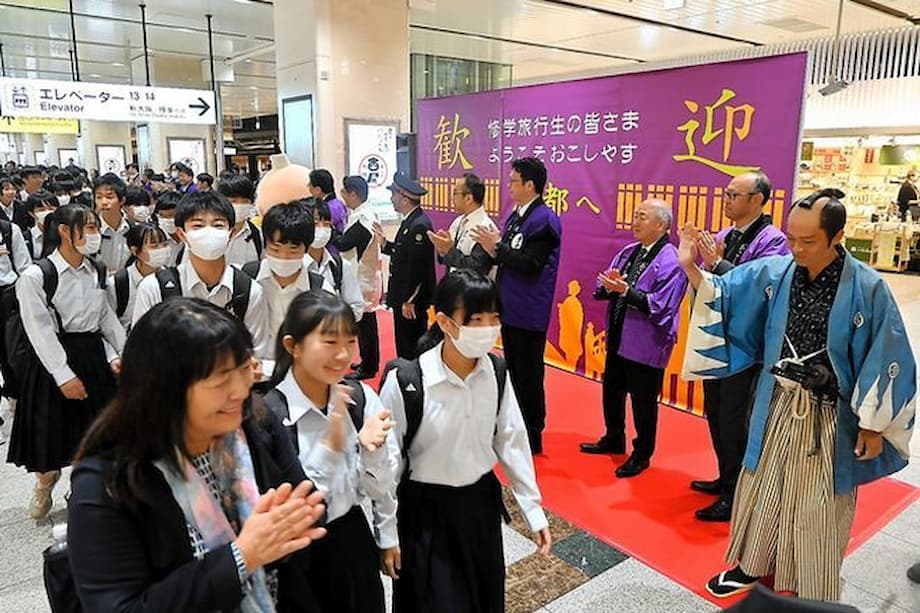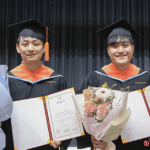Why a beloved tradition is changing
For generations, Kyoto has been the destination most Japanese students remember from their school years. That tradition is under strain. Heavy tourist crowds, packed buses, and long lines are eroding the educational value of class trips, prompting more schools to look elsewhere. The shift is small but growing, and it reveals how the surge in visitors is reshaping decisions far beyond leisure travel.
- Why a beloved tradition is changing
- What happened on the ground in Kyoto
- The scale of the problem, at home and abroad
- Where schools are going instead
- Money pressures and the weak yen
- How Kyoto is trying to manage crowding
- Could Kyoto still work for students
- What educators and families say
- What this means for local economies
- Key Points
Kyoto still welcomes vast numbers of people. A municipal survey reported 56.06 million visitors in 2024, the second highest on record after 2015. Yet student visits tell a different story. About 750,000 students came on school trips in 2024, down 7.4 percent from 810,000 in 2023. City officials point to more overseas travel by schools after the pandemic as one factor. They also acknowledge what teachers and parents say plainly. Many groups are staying away because the city feels too crowded to navigate on a tight schedule.
Japan’s school trips, known for careful planning and group learning, are meant to teach more than sightseeing. Teachers use the experience to develop teamwork, time management, and respect for local culture. When buses stall in gridlock and students spend hours queuing, those lessons suffer. Educators and parents are weighing whether the classic itinerary through Kyoto’s temples can still deliver the outcomes schools expect.
What happened on the ground in Kyoto
The turning point for one Tokyo junior high school came after a trip last September. On the third day, students explored Kyoto in small groups by bus and train with a list of historic sites. Traffic choked the schedule. At a stop near Kinkakuji, the crowd was so dense that one group abandoned the bus. Worried about making their final meeting point, they skipped Kitano Tenmangu and other sites and walked roughly 13 kilometers to Fushimi Inari Taisha. Other groups called teachers throughout the day to report they were cutting destinations because the clock was beating them. A teacher escort was worn out by evening.
Back in Tokyo, school leaders consulted a travel agency. They chose to replace Kyoto and nearby Nara with Shikoku for their next class trip. The aim was not to avoid culture, but to find it in a way students could truly experience. Shikoku offered cooking katsuo no tataki in Kochi, udon making in Kagawa, and lessons about late Edo period history. The school presented the change to parents in April and met no objections.
A mother of a second year student voiced concerns that echo across many families planning trips in a warming climate. After hearing constant reports about overtourism in Kyoto, she worried about long waits in hot conditions for buses and entry. She also liked that Shikoku would be new for both parent and child and promised hands on experiences.
A Kyoto trip now makes me worry about her health if she has to wait a long time to get on a bus or enter a site in hot temperatures. I heard Shikoku has many experience based programs, and I think she can spend quality time there.
Students were pragmatic. One said the destination mattered less than being with friends. Another looked forward to going to Shikoku because he had never been there. Their comments match a broader shift in education, where schools favor activities students can engage in directly over long days of moving between famous landmarks.
The scale of the problem, at home and abroad
Kyoto’s crowding is not only about foreign visitors. Domestic tourism remains a strong driver. Before the pandemic, estimates put the city’s total annual visitors near 88 million. That figure included many Japanese travelers, school groups among them. The city’s historic core, narrow streets, and reliance on buses concentrate people in a handful of famous districts. Social media directs travelers to the most photogenic corners, compounding the pressure.
Concerns about congestion and behavior are also nationwide. A recent survey of foreign visitors found that roughly one in three experienced problems linked to crowding during trips in 2024. Litter, entering restricted areas, and long lines topped the complaints. Many respondents said they would accept higher charges if the funds improved conditions and protected cultural sites. That attitude is shaping how cities approach tourism management, including the use of lodging taxes and dedicated transport for visitors.
Japan’s weak yen has helped bring a record wave of international travelers, but it has not pushed school trips back to pre pandemic overseas levels. With fuel prices and overseas costs higher in yen terms, many schools are choosing to stay domestic. At the same time, Kyoto’s crowds are making the usual route less attractive. The net effect is a diversification of destinations inside Japan, with schools spreading out to regions that can handle groups more comfortably.
Where schools are going instead
Alternative destinations combine culture, access, and logistics that work for group travel. Shikoku has gained attention for experience based activities. In Kochi, students can prepare katsuo no tataki while learning about local history tied to the end of samurai rule. In Kagawa, they knead and cut udon, then eat what they have made. These programs echo current teaching goals that prioritize inquiry and hands on learning.
Kanazawa in Ishikawa Prefecture is another favorite for schools in the Tokyo region. The Hokuriku Shinkansen connects Tokyo to Kanazawa in about the same time that a train to Kyoto takes. The city’s Kenrokuen garden is a natural classroom, and local high schoolers have guided tours for visiting students. Compact Hakodate in Hokkaido attracts groups with its tram network and walkable historic districts, which simplify group movement.
Schools prepare itineraries far ahead, often 18 to 24 months. That long lead time means the decisions being made today will be visible for several years. It also explains why a small shift away from Kyoto can continue even if visitor flows change again.
Shuichi Takeuchi, who heads a national association for school trips, called Kyoto’s role unique while warning that the old model does not always work at current crowd levels. He said students are not able to do activities as they used to. He also noted that more schools could shy away from Kyoto, given how early they must lock in destinations.
Kyoto has an overwhelming presence for school trips because of its history and culture. Students right now cannot participate in activities in the way they used to, so more schools may choose different regions.
Money pressures and the weak yen
Cost is another driver behind the shift. Transportation and lodging usually make up about 70 percent of a trip budget. The average cost of a domestic school trip for public schools rose from 61,206 yen in the 2018 academic year to 67,844 yen in 2024. Municipal boards have responded by setting caps on travel expenses or reducing the number of nights away. Those guidelines can rule out certain itineraries, especially when hotels and buses in peak cities command premium rates.
Currency swings have altered options. The weaker yen makes Japan attractive to foreign visitors, swelling crowds in famous areas during peak seasons. It also makes overseas trips costlier for Japanese schools. Some districts that had sent students abroad for years have paused those programs, redirecting funds to domestic travel with a clear educational theme, such as peace learning in Nagasaki or disaster preparedness studies in Tohoku.
Local governments across Japan are turning to lodging taxes to manage tourism and bolster infrastructure. Several prefectures and cities plan to introduce or expand accommodation taxes starting in 2025. In some regions, school groups receive exemptions. Policies vary by location, so school planners are watching how new tax rules apply to educational travel and whether funds support transit and crowd control that make group visits smoother.
How Kyoto is trying to manage crowding
Kyoto’s leaders have rolled out a series of measures aimed at easing pressure on daily life and keeping the city pleasant for visitors. A Sightseeing Limited Express Bus launched in mid 2024 ferries tourists directly to major attractions such as Kiyomizudera. The goal is to keep regular city buses clear for residents. Early ridership topped one hundred thousand by autumn, suggesting visitors will use dedicated lines when they are easy to find and reliable.
Other experiments have been slower to catch on. A Hands Free Bus lets riders leave their luggage on board as the vehicle makes a loop of hotels and attractions. Adoption by foreign visitors has lagged, as many still opt for trains or taxis with bags in tow. In the heart of Gion, community groups and the city have posted signs directing people away from private alleys and have discouraged intrusive photography of maiko and geiko. The message is that access to culture comes with respect for boundaries and privacy.
A major change arrives in 2026. Kyoto has approved a steep increase to its accommodation tax, with new tiers that raise fees across most price brackets and a top rate of 10,000 yen per person per night for luxury rooms. The city plans to channel the extra revenue toward transport capacity, infrastructure, and services that balance tourism with daily life. Officials have also discussed fare structures that prefer residents on certain lines and continue to promote off season activities for student groups, such as free opportunities to learn about traditional arts when demand is lower.
Could Kyoto still work for students
Kyoto is not uniformly crowded at all hours or in all seasons. Teachers who still want to use the city as a classroom can improve the experience with careful timing and route design. Early mornings at popular sites are often manageable, especially outside cherry blossom and autumn foliage peaks. Visiting midweek and traveling in smaller clusters can preserve the educational goals without spending half the day waiting for buses.
Several practical steps help. Schools can coordinate with the city’s tourist bus services and favor trains where possible, since Kyoto’s regular buses are the main choke point. Lodging near one cluster of sites reduces transfers. Splitting groups into different routes that converge later avoids everyone clogging the same doorway at the same time. Many temples and museums offer workshops with advance reservations, which deliver a quiet setting for hands on learning even on busy days.
A blended itinerary that pairs one or two famous landmarks with lesser known districts also works. Beyond Gion and Kiyomizudera, western Arashiyama has calm corners away from the bamboo grove. The museum district around Okazaki offers wide sidewalks and multiple venues within walking distance. If buses are slow, taxis used selectively for small groups can save time. When the budget allows, private charters remove uncertainty and let teachers stick to a schedule designed around learning goals.
What educators and families say
Educators stress that the purpose of school trips goes beyond checking boxes on a sightseeing list. The principal of Nishi Ikebukuro Junior High School in Tokyo described class trips as a key part of compulsory education. He emphasized the value of setting a plan, cooperating with classmates, and reflecting on choices during the journey.
It is necessary for students in compulsory education to develop planning and cooperative skills for their actions. I view school trips as the final goal.
Parents balance nostalgia for Kyoto with practical concerns. One mother who supported her school’s shift to Shikoku framed her worries around health and heat during long waits and said she welcomed the chance for her child to try local crafts and cooking in a new region.
Neither I nor my daughter have visited Shikoku. I heard there are many experience based programs, and I think she can spend quality time there.
Students often keep the change in perspective. Friendship and shared discovery matter most to them. As one student put it, any destination will do if the group is together. For another, the appeal was simple. A place he had never visited sounded exciting.
What this means for local economies
Kyoto’s economy depends in part on visitor spending. Tourism supports transport, hospitality, cultural preservation, and small businesses. When school groups avoid peak areas or skip the city altogether, that revenue is felt. City policies that fund transit upgrades and spread visitors across time and geography are designed to protect those livelihoods while reducing friction with daily life. If those measures improve conditions, schools may be more willing to return with itineraries that fit learning needs.
Regions gaining school trips stand to benefit in different ways. Educational travel brings predictable bookings, often in shoulder seasons when hotels and attractions are quiet. It also creates repeat visitors, since students frequently return later with family. Shikoku, Kanazawa, Hakodate, and other cities have invested in programs tailored to student learning, from guided garden tours by local teens to museum workshops and homestays. Those experiences deepen cultural exchange and keep money circulating in communities outside the usual tourism hubs.
Japan’s national tourism strategy aims to promote regional areas and diversify flows. School trips are a natural part of that approach. If more schools rotate destinations each year, the pressure eases in Kyoto’s busiest corridors and spreads benefits to places with capacity to welcome groups. The challenge for policy makers and educators is to coordinate calendars, transport, and curriculum so that travel remains a highlight of school life without overwhelming the places students go to learn.
Key Points
- Student travel to Kyoto fell to about 750,000 in 2024, down 7.4 percent from 810,000 the year before, as crowding complicates group itineraries.
- Kyoto welcomed 56.06 million visitors in 2024, the second highest on record, with crowding concentrated in popular districts and on bus lines.
- A Tokyo junior high school that struggled with delays and long walks in Kyoto has switched its next trip to Shikoku for hands on learning.
- Alternatives gaining ground include Kanazawa, with easy rail access and student led garden tours, and Hakodate, with a compact tram network.
- Average domestic school trip costs rose to 67,844 yen in the 2024 academic year, with transport and lodging making up about 70 percent of budgets.
- New or expanded lodging taxes are rolling out across Japan, while Kyoto will raise its accommodation tax in 2026, with the highest tier at 10,000 yen per night.
- Kyoto is testing fixes such as a Sightseeing Limited Express Bus, luggage friendly services, and access rules in Gion to protect daily life and cultural traditions.
- Schools plan trips 18 to 24 months ahead, so the trend away from Kyoto may continue for several years unless crowding eases and logistics improve.
- About one in three foreign visitors reported congestion problems in 2024, reinforcing the need for crowd management and better infrastructure.
- Decentralizing school travel supports regional economies and can improve educational outcomes through focused, experience based programs.




